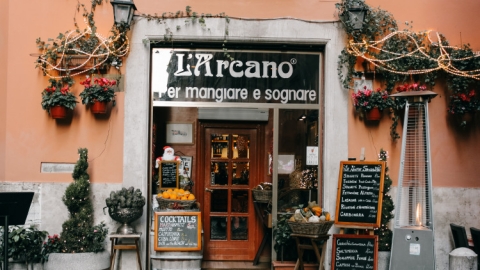"Delicacies" on the Norwegian banquet table
It is not too much to call it “a feast of delicacies” because the Christmas table in this fjord country includes North Sea fish, lamb from the West Coast, and pork dishes typical of Eastern Norway.
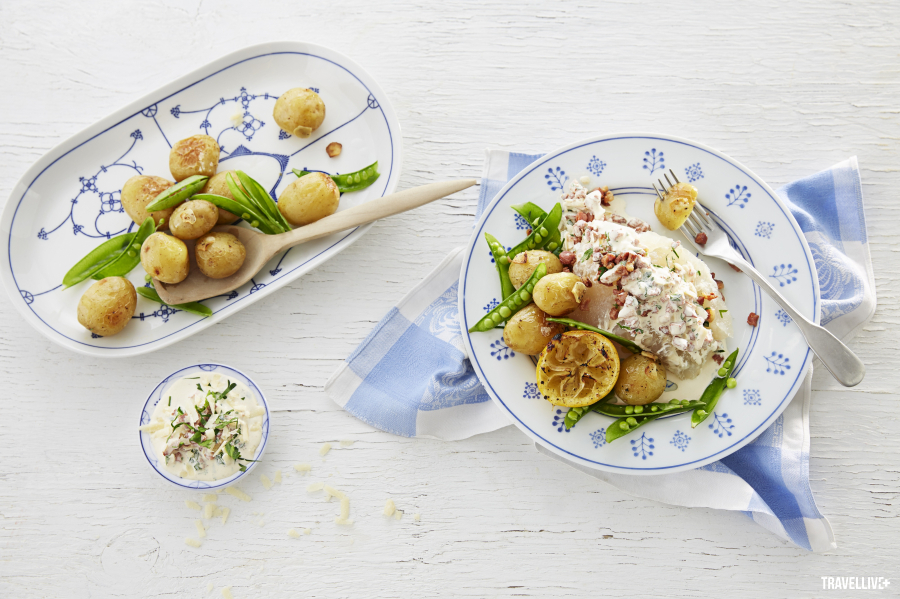
In the 16th century, there was a tradition in Norway that starting on December 1, Catholics were not allowed to eat meat until December 24. This period was called Advent, which consisted of four consecutive Sundays before Christmas. During this time, people were allowed to eat only fish, most commonly cod, Atlantic halibut, and cod.
I tasted lutefisk on the last day of Advent. Before tasting this strange dish, the name alone makes many people hesitant. The fish used to make this dish is usually white fish like cod, and especially winter cod, caught in the extremely clean waters of the Lofoten Islands in Northern Norway.


To make lye, people have to burn beech wood to ash, then mix it with water in a certain ratio to create lye with the right alkalinity, suitable for pickling fish. Nowadays, because the amount of beech in Northern Europe is extremely rare, people use birch ash instead - a very common tree in Europe.
Lutefisk is usually served with potatoes, mashed peas and fried bacon spread on top of the fish. Although it is such an elaborate dish, nowadays, lutefisk is not very popular with young people because of the elaborate preparation and the taste is not special compared to the other two delicious dishes for Christmas parties.
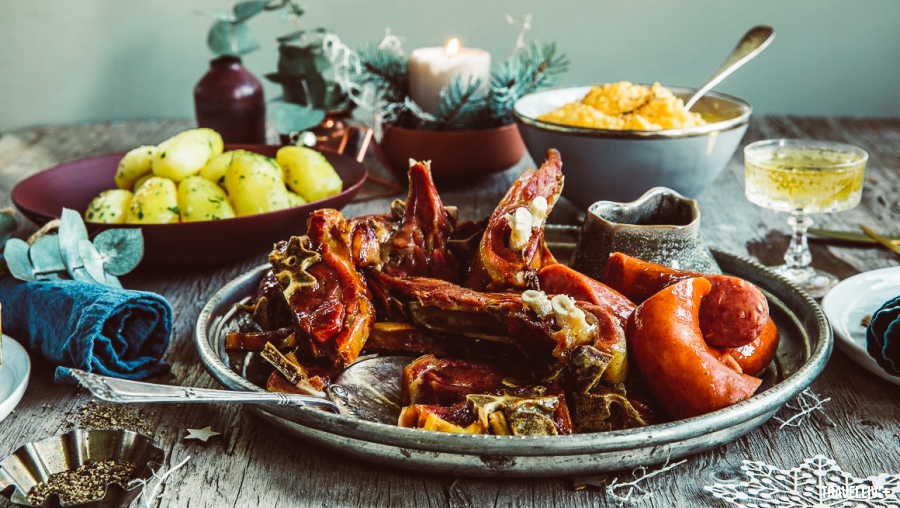
After World War II, Norway carried out an agricultural division, which included focusing on grain production and pork production in the eastern region, and the western region with its grassland terrain would focus on large livestock such as cows, sheep, horses... That is also the reason why on the Christmas table in these two regions there will appear two different dishes: pinnekjøtt in the west and svineribbe in the east.
Pinnekjøtt is a very old Scandinavian dish, dating back to the 18th century, originating from the method of preserving food by salting and smoking meat to preserve it for a long time. Therefore, pinnekjøtt is usually very salty. Before processing, people have to cut the lamb ribs into small, bite-sized pieces, then soak them in cold water for at least a day to dissolve the salt in the meat. After soaking, the ribs will be stewed in a large pot with a little water.
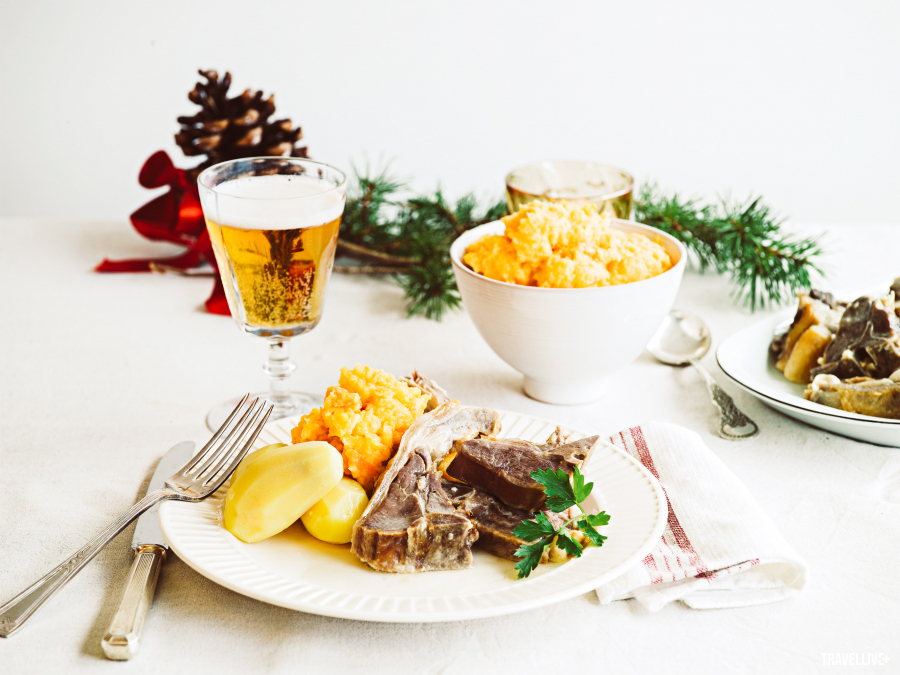
The special thing about pinnekjøtt is that the ribs are not cooked directly in a metal steamer, but must be placed on clean birch wood slats and the hot steam indirectly cooks the meat. That is why the name pinnekjøtt – meat on a wooden slat – has become the name for this lamb rib dish.
Closer to the palate of many people is svineribbe, a dish that, in my opinion, is very similar to… roast pork back home. However, unlike roast pork which can be eaten all year round and is delicious with vegetables and noodles, svineribbe only starts appearing in Norwegian supermarkets in early November and only lasts until Christmas.
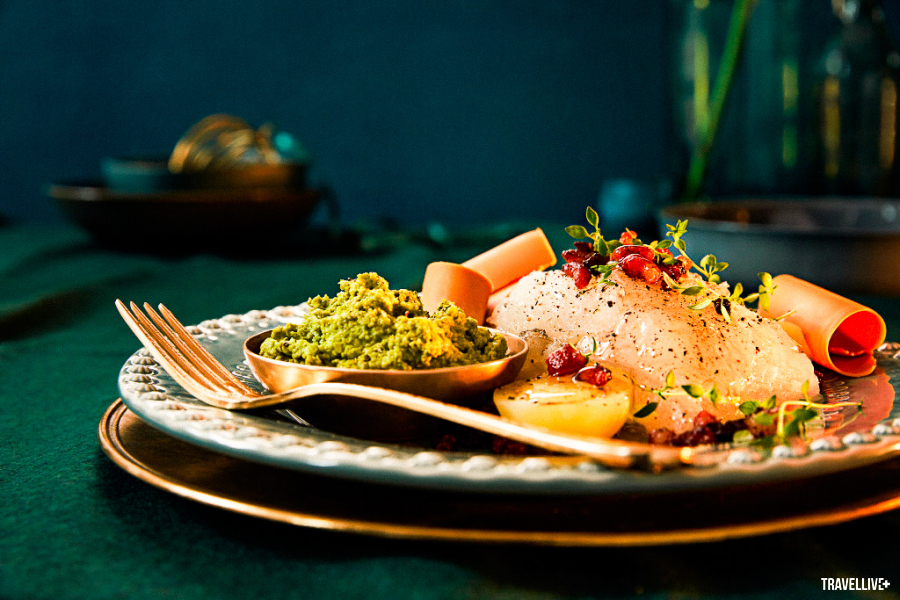
Gourmet housewives often use the crispiness of the pork skin to measure the level of "professionalism" of the host. A standard ribbe dish must have crispy pork skin, popping evenly without being tough, and it must not be too salty due to accidentally coating it with too much salt. When cut into long pieces, the skin must stick to the delicate fat and not fall out. Ribbe is often served with boiled potatoes and pickled purple cabbage with dill seeds, served with a sauce made from the meat juices secreted during the initial grilling process.
Sweden: “national meatballs” and “prince sausages”
When it comes to cuisine from the homeland of the band ABBA, meatballs (kjöttbullar) are probably the most typical representative. They are so popular that if you go to any IKEA store around the world, you can enjoy this dish at the IKEA restaurant system located inside the store.
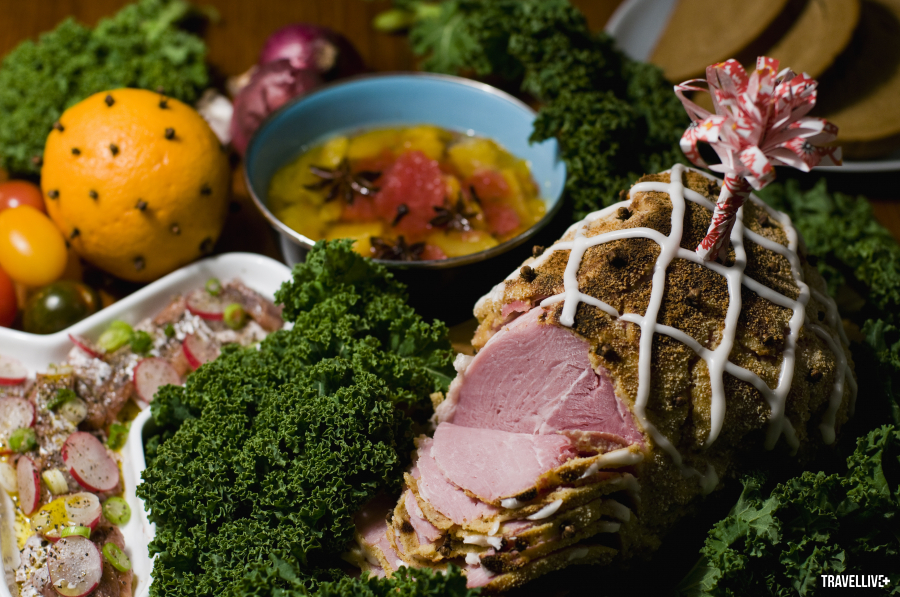
In terms of preparation, to be honest, meatballs are “far behind” the sophistication of their Norwegian neighbors for their Christmas dishes. And in fact, Swedes don’t have to wait until Christmas to enjoy kjöttbullar. This dish is extremely simple, just minced meat with spices, then fried until golden brown and served with potatoes, boiled vegetables, and sweet and sour jam from lingon fruit typical of the Northern Hemisphere. Because of its popularity, kjöttbullar has become an iconic dish of Swedish cuisine, and obviously always appears on everyone’s table, every family!
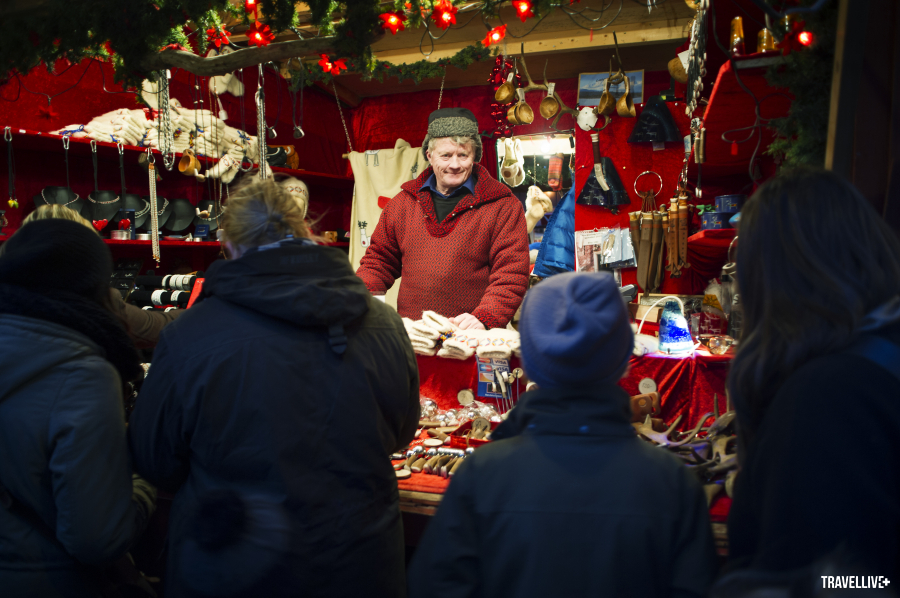

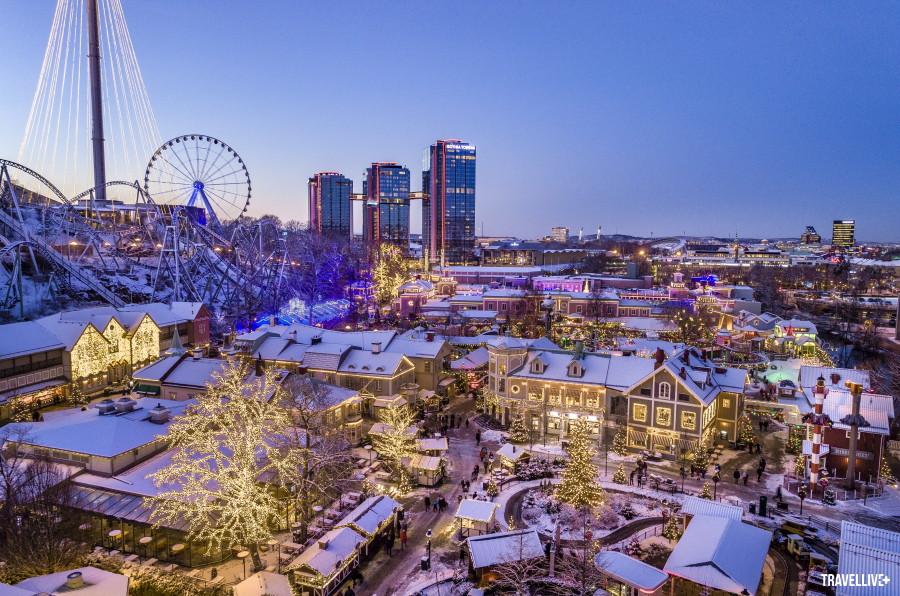
The name “prinskorv” (prinskorv) is a popular sausage in Sweden, created by a Viennese butcher in the early 19th century. This type of sausage is usually short and sold in many small strings. Before frying, people often split the sausage head into four so that when cooked, the sausage head will spread out to look like a prince’s crown.

Of course, the Swedish Christmas table must have more than that. A traditional table of this people is extremely sumptuous and full of all kinds of traditional Nordic foods, including meatballs, sausages, smoked salmon, chilled salmon served with sauce made from dill, mustard and vinegar, whole grilled cold cuts, grilled pork ribs, baked potatoes and onions, soft-boiled eggs, pickled herring with all kinds of flavors such as mustard, garlic, onions, dill..., pickled cabbage and various breads served with cheese. A Christmas table full of delicious but... easy to get bored dishes like this certainly cannot lack a few sips of Aquavit to help reduce the fat in the stomach!
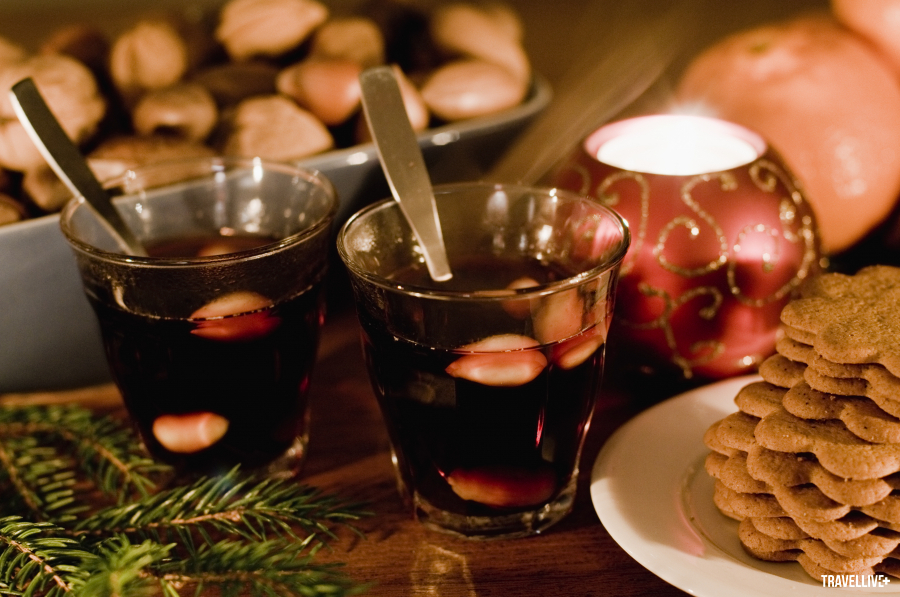
What's on the Christmas table in the "kingdom of hygge"?
When mentioning Denmark, people will immediately think of hygge, a peaceful and enjoyable lifestyle typical of Denmark in particular and Northern Europe in general. So on December 24, what is strange about the Christmas table in the "kingdom of hygge"?
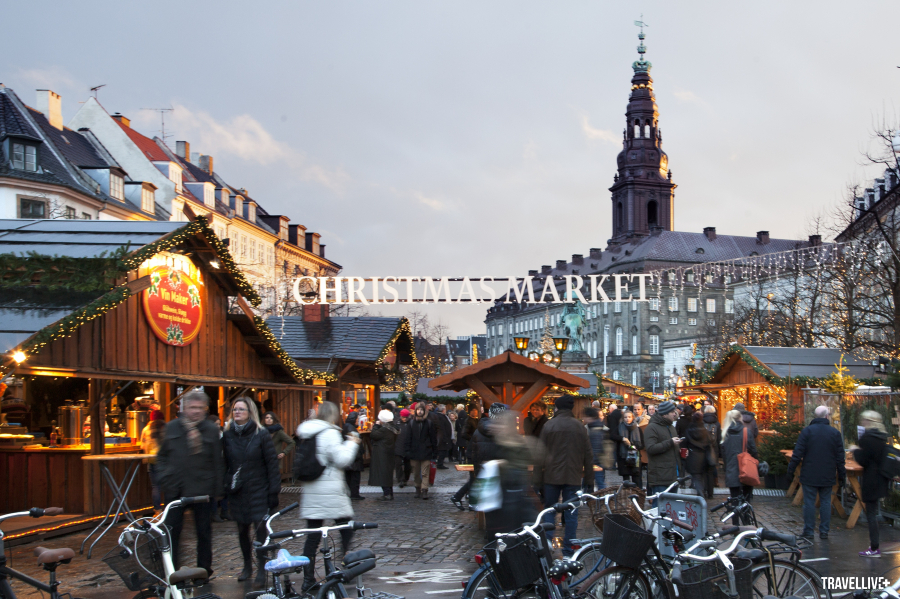
At first, the Christmas table in Denmark, like its two Viking brothers, was heavily influenced by Christian traditions. Christians were only allowed to eat fish dishes during Advent, and meat dishes such as sausages, bacon, grilled pork ribs, etc. were reserved for the table on Christmas Day. However, by the mid-19th century, when Christmas became an official holiday in Denmark, the meal had changed somewhat.
Instead of fish as before, people started eating roast goose and duck with chestnuts, pork stewed with apples, sausages of all kinds served with potatoes and red cabbage. This is also the “standard” Christmas menu in the land of mermaids today, although each region will have its own special dishes.



But if it were just the same old dishes, what would be the uniqueness of Christmas cuisine in Andersen’s homeland? The answer lies in two delicious desserts: kransekage (a kind of doughnut) and risalamande (a kind of almond porridge).
Kransekage, which can only be found in Norway and Denmark, is a tower of 18 rings stacked on top of each other. Along the sides of the cake, people often put flags or small decorations to make the cake more eye-catching. Kransekage is made from almond flour, powdered sugar and egg whites, then each ring is baked separately in the oven and used to glue them together with melted sugar. Each ring has a different diameter to form a pointed tower.

In the past, doughnuts were quite popular, often baked by housewives to eat with tea or coffee parties. Nowadays, because the way to make doughnuts is too elaborate and modern housewives no longer stay at home all day like traditional housewives, few people bake kransekage regularly. Gradually, doughnuts only appear on special occasions, including weddings and Christmas.
The way to enjoy the doughnuts is very unique, but it looks… not. Instead of eating the doughnuts from top to bottom, kransekage must be eaten from bottom to top! After the doughnuts are beautifully arranged on the tray, one person will lift them up, and another person will remove the largest doughnut ring at the bottom, then break them into bite-sized pieces, and spread them back on the tray. Everyone will enjoy that piece of doughnut, and when they are finished, they will continue… lifting the doughnuts and breaking off another ring. A good kransekage can last for two to three days without drying out, and when eaten, it should be chewy and have an almond aroma, with a slight vanilla scent.
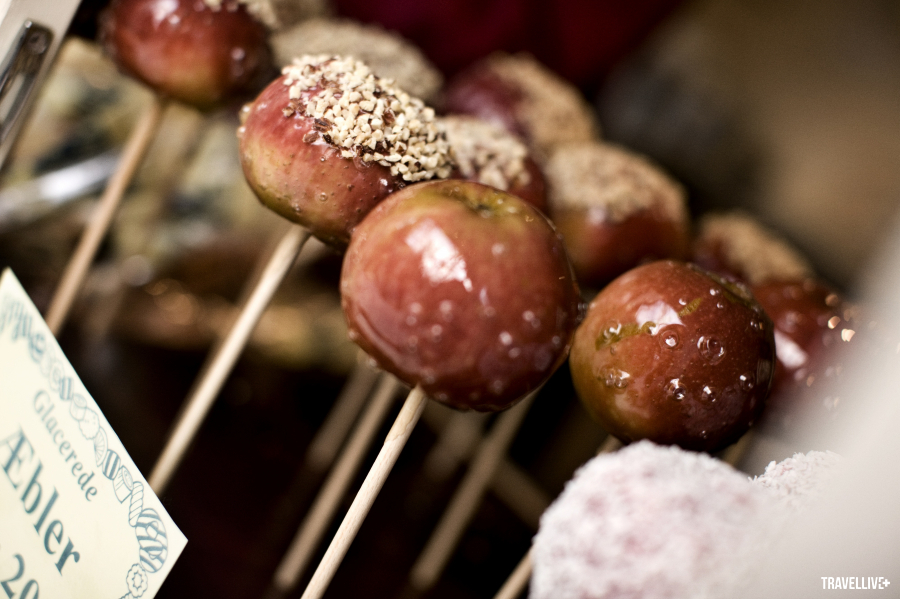
Risalamande, whose name comes from the French riz à l'amande, meaning almond porridge, was introduced to Denmark in the early 20th century and gradually replaced the traditional sweet porridge of the Northern Europeans. Almond porridge is made from a special type of rice used only for this dish, accompanied by super-rich fresh cream, milk and chopped almonds. According to tradition, whoever finds an intact almond in their bowl of porridge will be lucky and will receive a special almond gift. In families with children, adults will secretly put an almond in each child's porridge bowl so that everyone gets a gift!
Nowadays, the Christmas table in the “kingdom of hygge” would not be complete without hot bowls of almond porridge, in the middle of the porridge is a piece of melted butter, sprinkled with a little cinnamon powder to enhance the aroma. And just like that, young and old all enthusiastically eat up their portion in the hope of finding a lucky almond.

What about the banquet in Iceland?
Although Iceland is a country with Viking warrior origins, due to its special geographical location, isolated from the rest of Europe and Northern Europe, Icelanders also have their own Christmas dishes, completely different from the other three brothers.
With a flock of about 800,000 sheep but only a population of more than 300,000 people, it is not surprising that dishes made from lamb are very popular in this volcanic land. Icelandic sheep, perhaps because they eat grass fertilized with volcanic ash, breathe in the air that always has a characteristic rotten egg smell of sulfur, have impeccable meat quality. Even in the capital Reykjavik, there is a lamb hotdog kiosk so famous that if you visit "Smoky Bay" (the literal translation of the capital Reykjavik) without eating lamb hotdog, it is considered that you have not visited Iceland. But wait, the story of Icelandic cuisine, I will see you in another article.
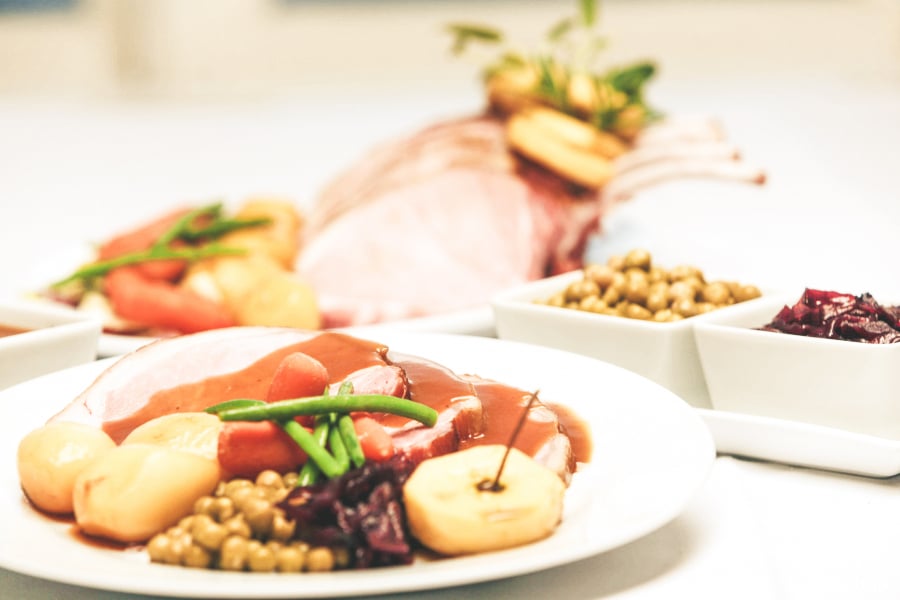
Back in the past, the tall and muscular Viking pirates, living in a place with harsh climate and soil like Iceland, needed a rich source of protein to survive the cold winter, as well as have enough energy to... be pirates. That source of protein was obtained through raw meat. However, later on, when people became more civilized, they began to switch to smoking meat to preserve its freshness and original flavor. Therefore, hangikjöt smoked lamb is one of the indispensable dishes every Christmas season in Iceland.
Alongside hangikjöt, Icelanders also serve up cold cuts and partridges with beans, corn, cabbage and sweet baked potatoes on their lavish tables. But like their Danish cousins, the uniqueness of Icelandic feasts lies not in the abundance of meat and fish, but in a very simple dish: laufabrauð, which originates from the North of Iceland.
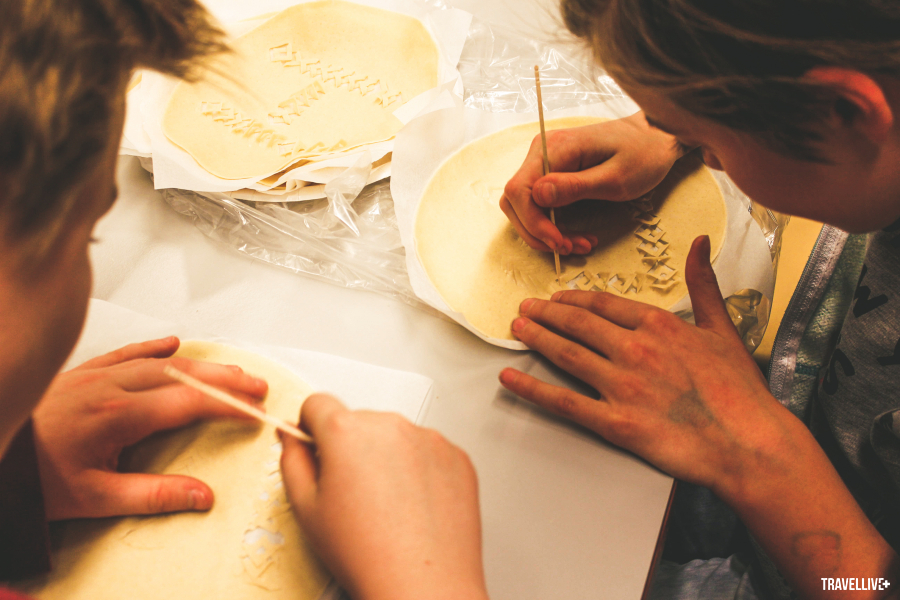
Banh la, as its name suggests, are round cakes, about 15-20cm in diameter and as thin as leaves. The surface of the cake is decorated with geometric shapes or other simple images. These patterns are carved with a special knife to avoid tearing the fragile dough. After being shaped, the cake will be fried in a pan of hot oil, then can be eaten immediately or sprinkled with a little powdered sugar on the cake to create sweetness. The carving of the cake is also an opportunity for everyone in the family to sit together in the cozy kitchen, whispering and chatting, despite the snow falling outside, and another full year is about to pass.
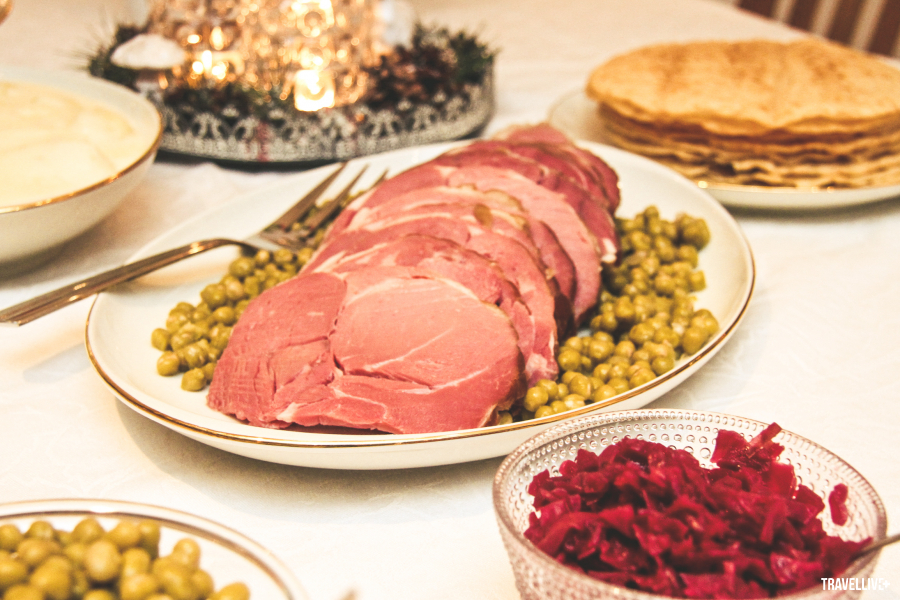
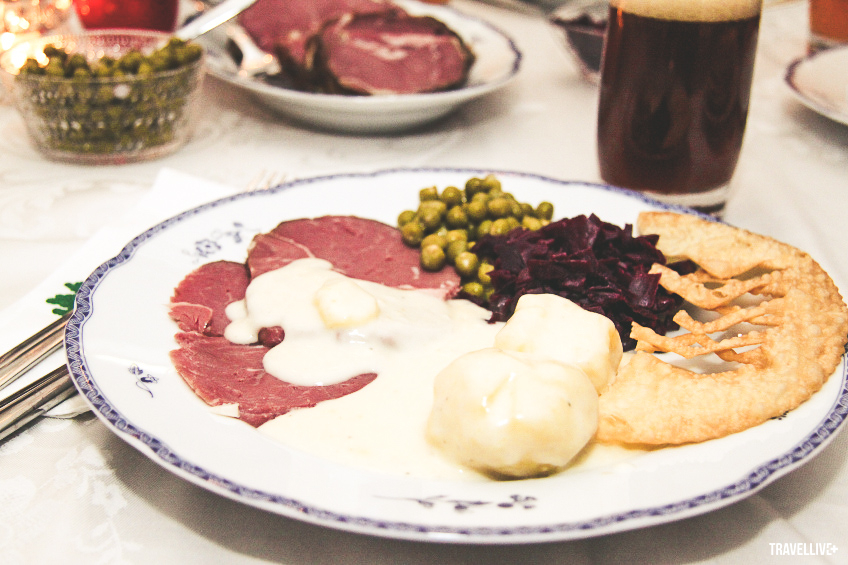





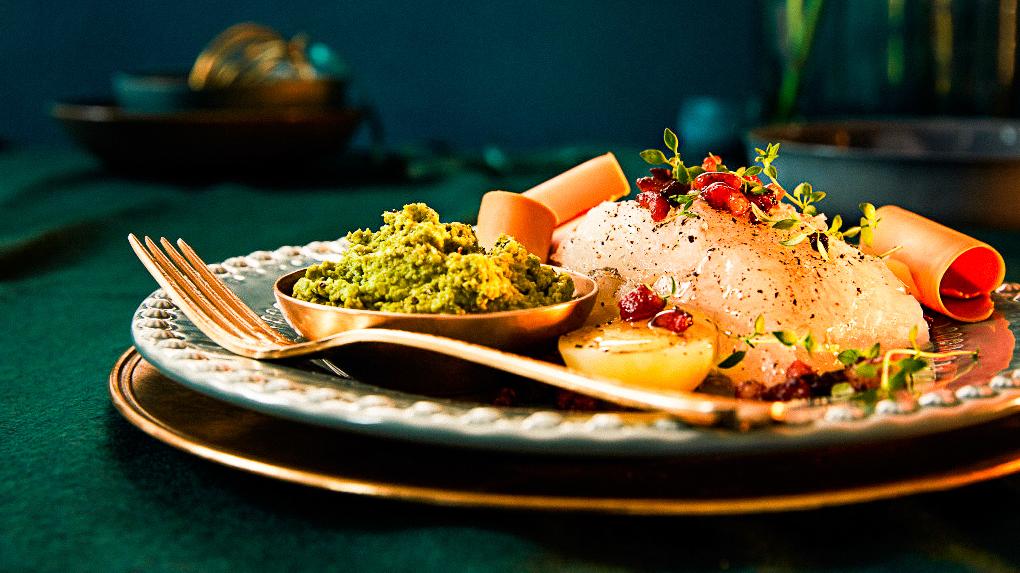












_result.jpg.jpg)
_result.jpg.jpg)






